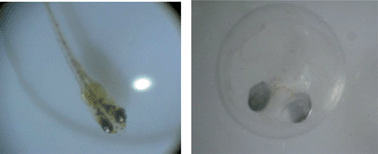Biotoxicity evaluation of coking wastewater treated with different technologies using Japanese medaka (Oryzias latipes)
Abstract
The potential biotoxicity to the environment should be addressed during wastewater treatment. In this study, biotoxicity of coking wastewater effluent from MBR, Fenton, electro-Fenton and coagulation treatment processes was evaluated using embryos and larvae of Japanese medaka (Oryzias latipes). The acute toxicity based on 96-h larval mortality as well as the chronic toxicity based on embryo hatching, larvae swim-up failure, growth, and sexual ratio were determined. The results showed that different treatment processes have various biotoxicity levels. The acute toxicity of Fenton and electro-Fenton effluents was much higher than that of MBR and coagulation. For the chronic toxicity, the effluent of the Fenton/electro-Fenton process displayed lower embryo hatching, larvae survival and growth in comparison with the effluents of MBR and coagulation. No endocrine disruption was detected in MBR, Fenton and electro-Fenton effluents, but was contained in the coagulation effluent. The biotoxicity test indicated that the effluent of MBR was very safe for the environment. The toxicological indices were necessary for ecological safety maintenance in the industrial wastewater treatment.


 Please wait while we load your content...
Please wait while we load your content...